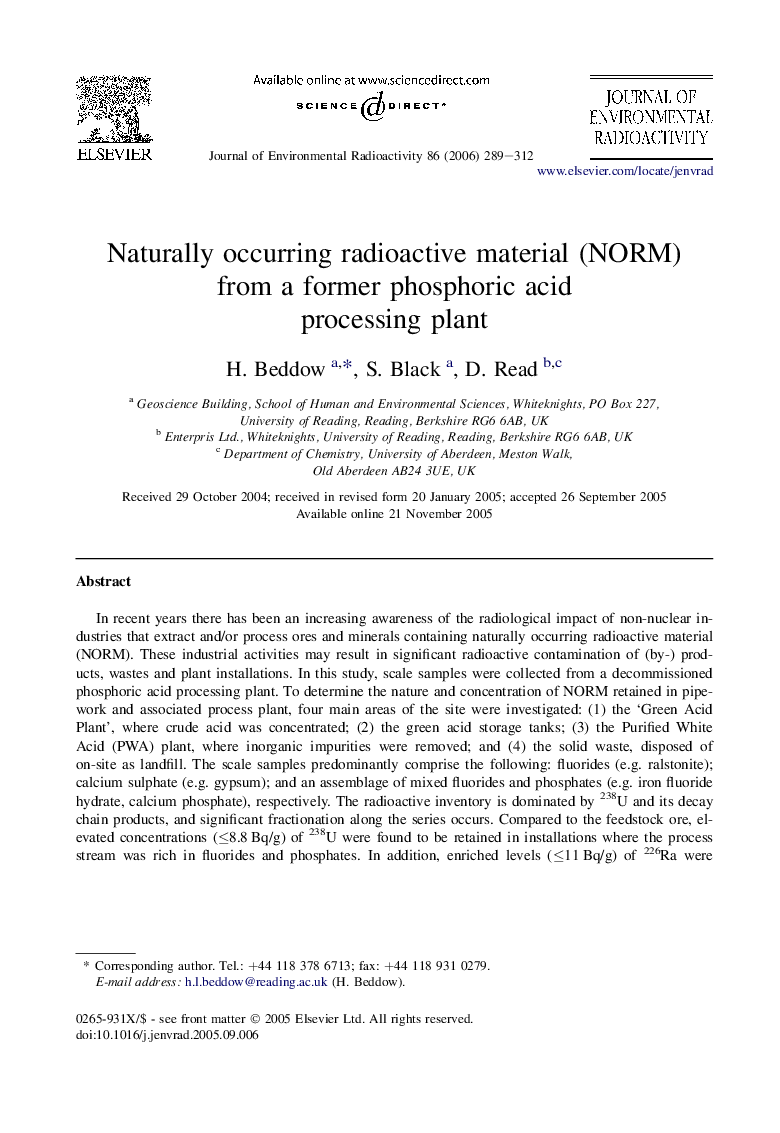| Article ID | Journal | Published Year | Pages | File Type |
|---|---|---|---|---|
| 1739593 | Journal of Environmental Radioactivity | 2006 | 24 Pages |
In recent years there has been an increasing awareness of the radiological impact of non-nuclear industries that extract and/or process ores and minerals containing naturally occurring radioactive material (NORM). These industrial activities may result in significant radioactive contamination of (by-) products, wastes and plant installations. In this study, scale samples were collected from a decommissioned phosphoric acid processing plant. To determine the nature and concentration of NORM retained in pipe-work and associated process plant, four main areas of the site were investigated: (1) the ‘Green Acid Plant’, where crude acid was concentrated; (2) the green acid storage tanks; (3) the Purified White Acid (PWA) plant, where inorganic impurities were removed; and (4) the solid waste, disposed of on-site as landfill. The scale samples predominantly comprise the following: fluorides (e.g. ralstonite); calcium sulphate (e.g. gypsum); and an assemblage of mixed fluorides and phosphates (e.g. iron fluoride hydrate, calcium phosphate), respectively. The radioactive inventory is dominated by 238U and its decay chain products, and significant fractionation along the series occurs. Compared to the feedstock ore, elevated concentrations (≤8.8 Bq/g) of 238U were found to be retained in installations where the process stream was rich in fluorides and phosphates. In addition, enriched levels (≤11 Bq/g) of 226Ra were found in association with precipitates of calcium sulphate. Water extraction tests indicate that many of the scales and waste contain significantly soluble materials and readily release radioactivity into solution.
